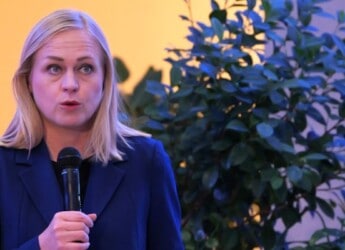|
|
Content Assessment: Evaluating Communication Approaches - A Principled Look
Information - 92%
Insight - 94%
Relevance - 88%
Objectivity - 90%
Authority - 93%
91%
Excellent
A short percentage-based assessment of the qualitative benefit of the post highlighting the principles of effective marketing communications.
Editor’s Note: Based on the transformation of communication approaches and technologies since the advent of the Internet, email, and social media, historically accepted principles of marketing communication require continuous and considerable evaluation in light of the available new conduits to communicate with others. With past marketing communication principles in mind, the following enhanced marketing communication principles are provided for your consideration in shaping communications strategy and tactics.
These principles have been adapted from the work of Christopher E. Van Avery in his writings on the importance of expanding the principles of warfare to take into consideration the fluidity and complexity of future battlefields. While communication in the business arena is certainly not war, the principles of war have always served as a solid framework for considering marketing communication efforts.
These expanded marketing principles may be useful in helping provide a framework from which individuals and organizations can better ensure effective and efficient communication efforts.
12 Enhanced Principles of Marketing Communications
Marketing communications require an achievable business objective to be effective. Whether it be reaching, informing, engaging, or encouraging individuals of interest, the achievable business objective is the starting point for understanding and applying the following principles of marketing communications.
- Objective is focusing all efforts toward the decisive achievement of obtainable business results from the use of communications.
- Speed is the rapid execution of all functions and operations related to communications.
- Concentration of Effects is the focusing of traditional and advanced communications techniques to achieve business objectives.
- Economy of Effects is employing the right number and combination of communications tools and techniques to achieve desired results.
- Pervasive Awareness is building an in-depth knowledge of the market, the client, and the competition – to include their centers of gravity and challenges.
- Continuous Planning is the ongoing development and redevelopment of courses of action, for the current situation and contingencies, to rapidly achieve business results.
- Flexibility is rapidly adapting to new or different requirements or situations.
- Sustainment is ensuring the persistence of communications tools and techniques to see the communication effort through, from initiation to completion of business results.
- Efficiency of Command is ensuring there are no more layers of required approval than necessary for communication efforts.
- Security is ensuring the safety and integrity of messages and responses during all phases of the communications effort.
- Integration of Actors is allowing appropriate participation in planning and assigning useful tasks to all individuals and organizations taking part in a communications effort.
- Surprise is acting in an unpredictable fashion to leverage the utility of effects, and it retains some value in the updated principles of communication.
Transformation and technology continue to expand and complicate the marketing communications arena. In order to remain useful, the aforementioned principles of marketing communication must continually be evaluated and, most likely, adjusted as communications tools and techniques evolve.
It is also important to understand that the independence of separate communications principles may now be a thing of the past. In reality, like the actors and systems in today’s new world of communication, most of these marketing communications principles are interdependent on each other – an interdependency that can provide a synergistic effect to those leveraging these enhanced principles in their communications planning and execution efforts.
References
- Avery, C. E. (2007). 12 New Principles of Warfare. Armed Forces Journal. Retrieved from http://armedforcesjournal.com/12-new-principles-of-warfare/
- On War – Wikipedia. (2017). Retrieved March 25, 2017, from https://en.wikipedia.org/wiki/On_War
- Fou, A. (2010, February 4). The 22 Immutable Laws of Marketing No Longer Apply | ClickZ. Retrieved from https://www.clickz.com/the-22-immutable-laws-of-marketing-no-longer-apply/59691/
Additional Reading
- [Annual Update] International Cyber Law in Practice: Interactive Toolkit
- Defining Cyber Discovery? A Definition and Framework
Source: ComplexDiscovery


























